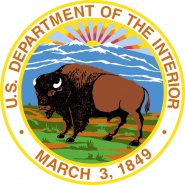Department Of Interior Scales Up Its Mitigation Strategy
In order to solve big picture issues like climate change and invasive species, the Department of Interior is scaling up its new approach to mitigation to a landscape level aiming to increase certainty in the process as well as improve conservation results. The Department’s report was released earlier this month.

24 April 2014 | From developments in oil-like the Keystone XL pipeline-and natural gas developments to the recent push of renewables, there has been a massive increase in energy projects in the US. And much of it is happening on public lands. Last summer, President Barack Obama highlighted renewable power as a means to curb climate change. He directed the Department of Interior (DOI), which manages Federal lands, to permit enough renewable projects to power 6 million homes. And legislatiors seeking to further extend the fracking boom to federal lands have been working legislation through Congress to scale up the practice.
This energy expansion will undoubtedly have impacts on the natural environment. And these impacts will require mitigation. Earlier this month, the DOI released a new strategy on improving mitigation policies aiming to enhance the conservation outcomes and also improve the efficiency of the permitting process for infrastructure and development projects.
The DOI oversees the Bureau of Land Management (BLM), Bureau of Reclamation, US Fish and Wildlife Service (USFWS) and the National Park Service among other agencies. It controls a total of 500 million acres of surface land. The biggest managers within the DOI are the BLM, which administers 256 million acres and the FWS, managing 92.6 million acres. The BLM handles public land used for energy development-it will handle the permitting process for the renewable projects slated to happen on federal land- livestock and timber harvesting among other activities. As expected, mitigation for these projects is often needed.
Mitigation in general is meant to avoid, minimize or compensate for adverse impacts to natural resources from development. Ideally, all negative impacts on ecosystems would be avoided but if that scenario isn’t possible, then mitigation efforts would be implemented to minimize or offset harm.
In order for the DOI to achieve successful mitigation in the face of rising development activities, a comprehensive system is needed which is why the DOI tasked the Energy and Climate Change Task Force (Task Force) with developing this new approach. The DOI intends to use this strategy to implement landscape level mitigation efforts across the entire department.
The report lays out ten clear principles to guide mitigation practices:
- Landscape-scale: Incorporate landscape-scale approaches into all facets of mitigation.
- Full Hierarchy: Utilize the full mitigation hierarchy, which is to take full advantage of compensatory mitigation mechanisms like conservation banking.
- Promote Certainty: Establish protocols that will simplify the planning and project review phase.
- Advance Mitigation Planning: Proactive role in incorporating mitigation at the outset of projects that will impact natural or cultural resources.
- Science and Tools: Develop and use scientific tools and information to increase the effectiveness of mitigation efforts. (The Western Governors’ Crucial Habitat Assessment Tool-CHAT– which identifies ‘crucial habitat’ to wildlife, is one example)
- Foster Resilience: Identify mitigation efforts that increase the resilience of natural resources in the face of climate change.
- Durability
- Transparency
- Collaboration: Engage with multiple federal and state agencies, tribes and other stakeholders to shape mitigation activities.
- Monitoring: Continue to evaluate and monitor the success of mitigation overtime.
The landscape level approach the DOI is aiming for, with the help of these guidelines, should give the agencies within the DOI the ability to better address large scale issues like climate change.
The report goes on to discuss implementation strategies and signs of progress. The latter includes initiatives like the Desert Renewable Energy Conservation Plan, which aims to protect California’s desert ecosystems while guiding the appropriate amount of renewable energy generated from this location. There are also projects like the Lesser Prairie Chicken Range-wide Conservation Plan that involves collaboration over a range of stakeholders to provide species conservation. More of this type of cross-sector engagement, as seen in these initiatives, is needed, the report concludes, in order to achieve landscape-level mitigation.
Kelli Barrett is a freelance writer and editorial assistant at Ecosystem Marketplace. She can be reached at kbarrett@forest-trends.org.
Additional resources
Please see our Reprint Guidelines for details on republishing our articles.

